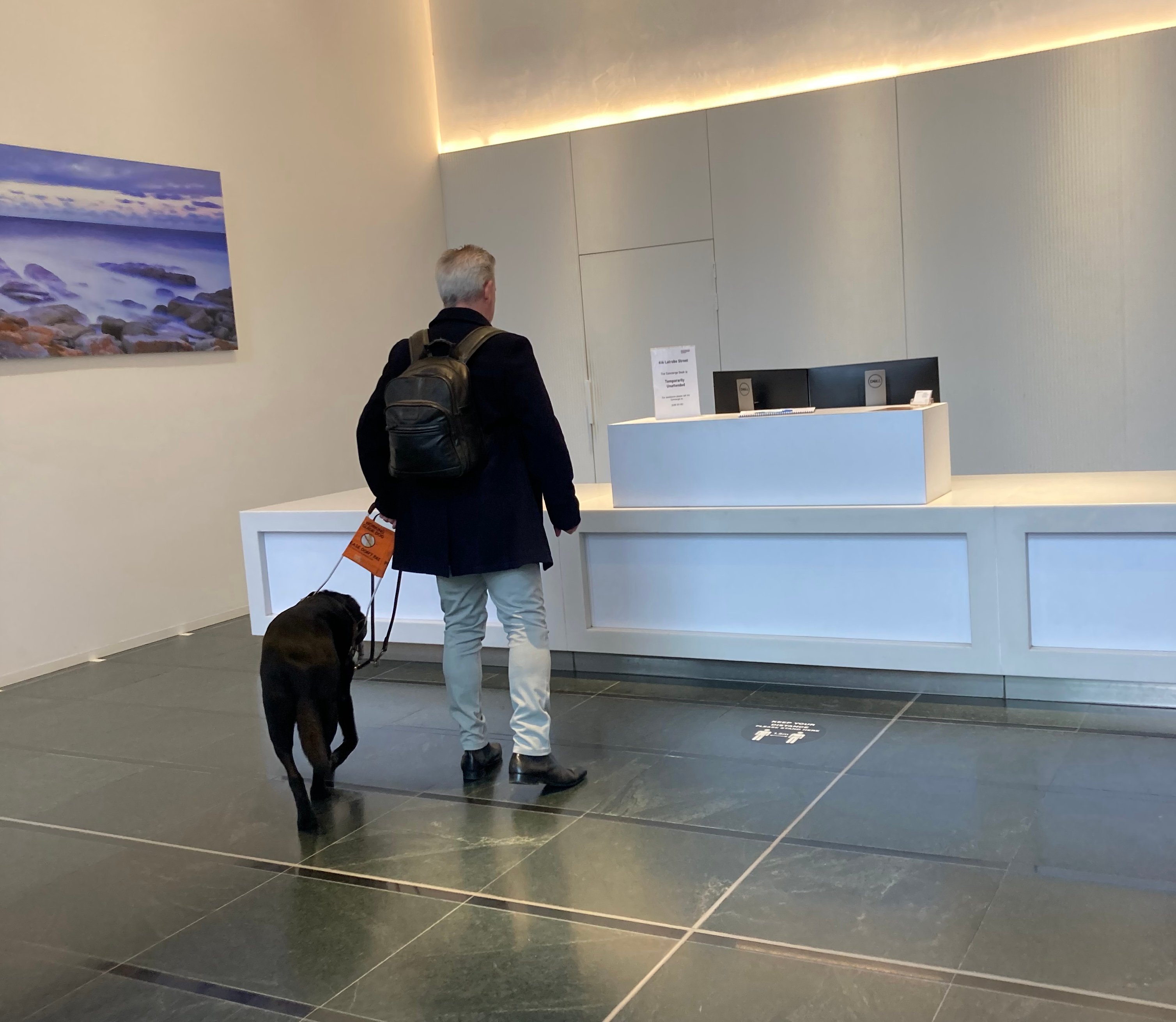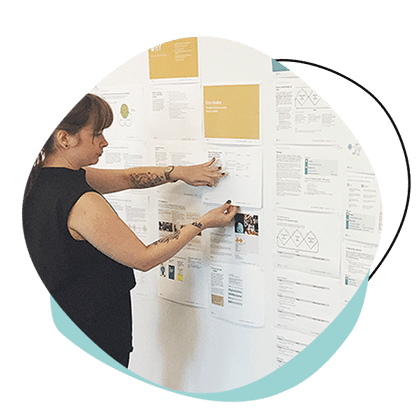DESIGNING BETTER SERVICES, TOGETHER
Designing an accessible government building
We recently worked with a customer-facing government agency that was in the rare position of being able to design its new headquarters from the ground up.
The new building represented a huge opportunity to not only meet obligations in Inclusive Victoria: State Disability Plan but also to ensure people who are often excluded were genuinely included in the design of the new space, their voices heard and their needs understood.
The challenge
There were two parts to our work. Firstly, to carry out research with public users with a variety of different abilities to understand their needs and barriers when using the organisations’ existing spaces.
The second part was to undertake co-design workshops with public users, staff and architects, taking what we had learnt in research and collaboratively exploring how the future space could be designed to better meet their needs.

What we did
Part 1 - research
Our primary research approach was contextual enquiry: to simulate real situations that customers experience with the organisation so that genuine barriers and needs could be uncovered. With the help of social enterprise, Ability Works, we recruited people living with neurodiversity, visual, hearing or cognitive impairments and physical disabilities and observed them navigating the organisation’s existing premises; from arriving in the car park, through security and customer service, right through the experience to exit.
To accommodate research findings into building plans, architects needed to hear insights in a timely, digestible way. We created weekly, 30-minute “fishbowl” playbacks where we shared photos, stories and short videos of our research sessions. Videos were especially impactful and helped communicate quickly the human needs we were uncovering.
This is an example of one of the videos we shared, which shows one of our research participants demonstrating how accessible toilets are not always accessible:
We synthesised everything we learnt into clear insights which we then brought into the second part of our engagement - co-design workshops.
Part 2 - co-design workshops
This was the first time the organisation had engaged with public users in the design of spaces, and their ambition was to not only to get a better outcome for the building design, but also to help embed a culture of empathy and an outside-in perspective throughout the organisation.
To do this, we designed workshops where staff and architects came together to explore what the new building could be like alongside people vulnerable to exclusion, with everyone having an equal voice in the sessions.
Workshop participants included people who identify as:
- Being homeless
- Refugees and migrants
- Having physical disabilities (blind, vision impaired, deaf, hearing impaired, cognitive disabilities)
- Having a wide range of sensory needs
Outcomes
We were able to have some impact on making the building more accessible and welcoming to all, however the biggest change was in the culture of the organisation. We helped staff to think in fundamentally different ways through hearing stories first hand about not only what would make the experience more comfortable for many people, but why. This encouraged empathy, learning and the forging of new understandings and relationships.
“Thank you, I learnt so much, I had never thought about space from these perspectives before” --Project Manager
“Thanks for the workshops, I got so much out of them and have now organised inclusivity training for the whole customer service team” -- Customer Service Manager.
Related case studies

SERVICE DESIGN
Transport as a service in Sydney’s North West
We worked with customers and transport stakeholders to orchestrate how all modes of transport and mobility will come together as a service ecosystem to support behaviour change.

